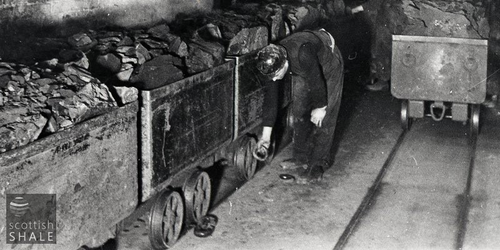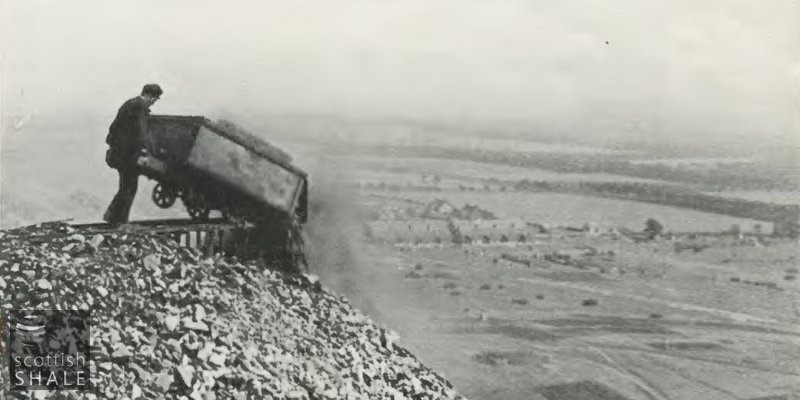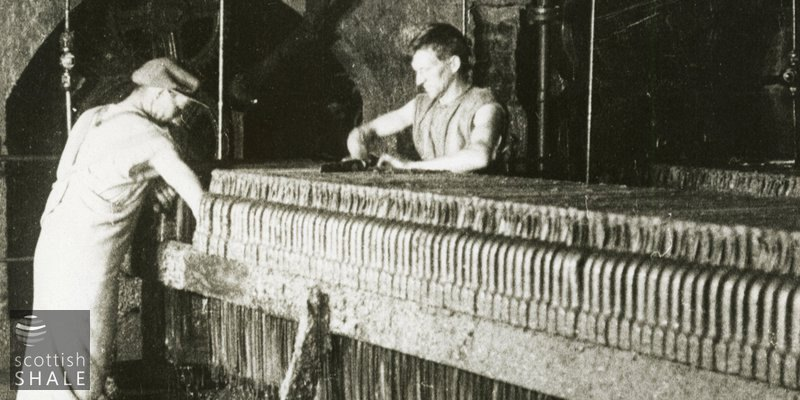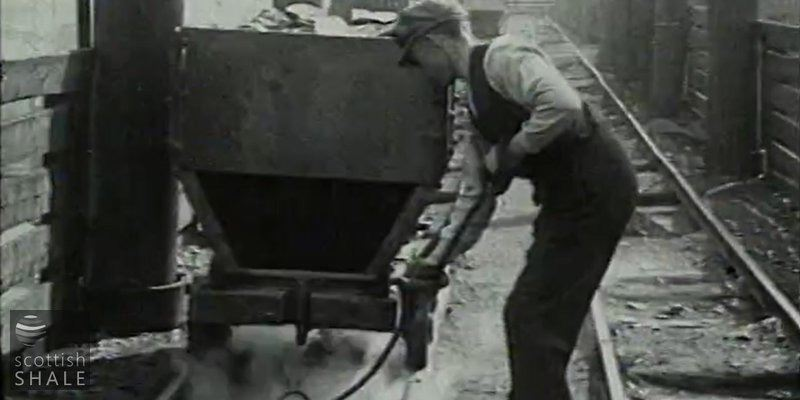Was your Grandad a Snibbler?
Strange names for shale occupations
P20001 - first published 22nd August 2020

In preparation for launch of our new scottishshale website, we're now working through the few old employment records that remain from the shale oil industry. It's sad that the bulk of official employment records seem not to have survived, or still remain outside the public domain. Fortunately we have fallen heir to a few old ledgers “pulled out of a skip” by well-meaning folk many years ago, which provide a little information about some of the men and women who worked in the shale oil industry; along with their job titles.
These job titles can sometimes be bit of a puzzle. The names of many occupations sound rather odd to today's ears, and may provide few clues as to what a job involved or where it took place.
Those working underground often had the strangest job names. Miners were in many way a race apart, using a special vocabulary to describe their jobs and working environment. Some mining terms were very local, others surprisingly international – in some instances a mining tool or a process might be known by the same name in mines throughout Europe. To guide the uninitiated, a number of glossaries of mining terms were published during Victorian times, which were doubtless of great value to gentlemen proprietors when required to converse with their workforce on technical matters.
Many terms that now sound a little odd were common vocabulary right up until the end of the mining industry. Most have perfectly logical origins. A “bottomer” manhandled hutches (wagons) of shale into the cage at the pit bottom; a “brusher” cut back the walls and roofs to made safe the underground roadways; a “chain runner” linked and unlinked rakes of hutches (trains of wagons) to continuously moving overhead cables and followed them in their journey along underground passages.
Some terms are less easy to deduce. A number of shale workers described as “cleek hunters” stumped us for a while, until we came across a directory of occupational terms, produced by the Ministry of Labour in 1927. This helpfully explains that a cleek hunter was someone who “supervises movement of hutches on underground roadways, so as to clear shale away from working face”.
One of the most smile-inducting job titles was that of “snibbler”. A “snibble” was a metal pin, bent to form a loop handle at one end, which was inserted between the spokes of a hutch wheel to prevent it from moving. A snibbler's job involved slowing down hutches once disconnected from the haulage cable, and inserting snibbles as a form of parking brake. There is a particular rich variety of words to describe things that you place under or within wheels to prevent movement. The terms “chock”, “scotch”, “sprag”, “trig” and “snibble” seem to have been used interchangeably within the shale districts.
While most mining terms were widespread and well-known, the job roles specific to shale oil production were less well documented. Accident reports, describing terrible injuries inflicted in the course of employment, sometimes provide the best impression of a particular job role. In the operation of shale oil retorts – the tall vertical ovens in which oil shale was roasted – it was the job of the retort charger to empty hutches of oil shale into the top of these red-hot tubes, and the job of the gulletman to withdraw hot spent shale at the base of the retort. There are accident reports of chargers falling from the exposed heights of a retort bench, and reports of gulletmen being entrapped within the rotating rollers at the retort base, where the spent shale was extracted.
Records also list some employed as “retort ratchetman”, retort pipe-cleaner”, “retort dropper”; but the precise nature of their duties remain unclear.
In the early 1930's, the introduction of a cracking plant and other new technologies at the central Pumpherston refinery brought many new job roles. Amongst the various job titles were “economiser man”, “neutraliser man” and “desalter man” (which sound like an unlikely trio of superheroes). Can anyone provide any clues as to what these refinery jobs involved ?


